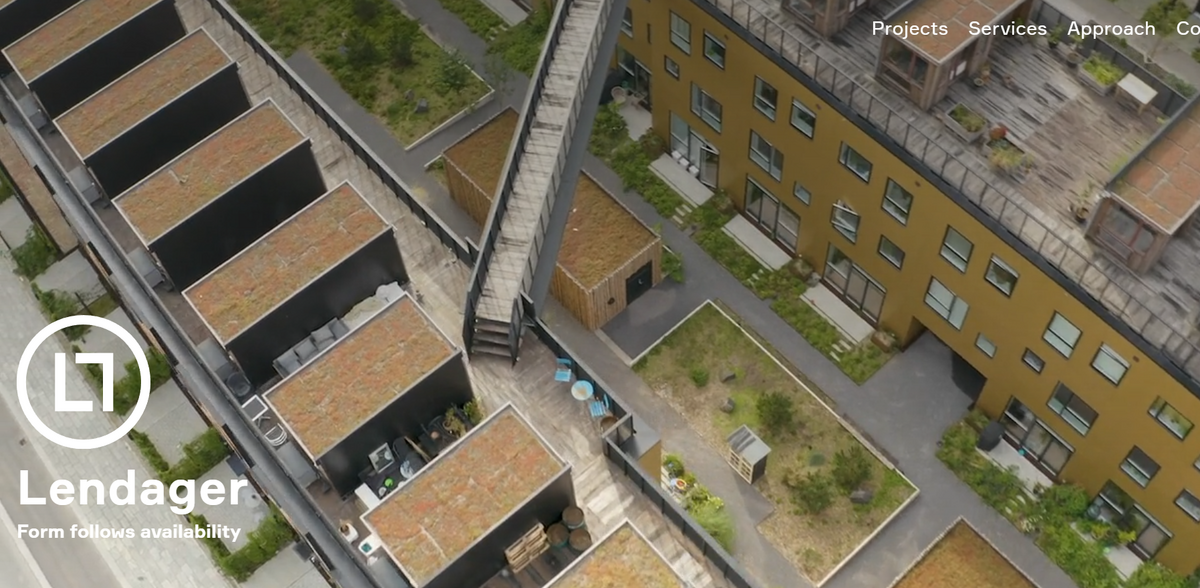What the Project Is
Lendager Group is a Danish-Icelandic architecture and innovation company dedicated to promoting sustainability and circularity in the built environment. Their mission centers on creating regenerative cities, buildings, and solutions that leave a positive impact on the planet. The project journey began in 2021 with the Structural Reuse initiative, where turning challenges into opportunities was the order of the day… The load-bearing structure of a building, accounting for up to 80% of its carbon footprint, became the vital spotlight. Through research and practical efforts, they paved the way for reusing concrete elements and structural steel, ensuring that the weight of the past transitions into the innovative designs of the future.
Main Benefits
The project showcases the tangible benefits of sustainable practices in the built environment. By integrating cross-disciplinary expertise, the organization offers a solid foundation in holistic sustainability across architecture, advising, and innovation. Key figures and facts include:
- Four years of dedicated work culminating in a successful conference and the launch of two new standards.
- New Danish standard for reusing concrete elements – a pioneering development in the field.
- Contributions to a European technical specification for the reuse of structural steel.
- Projects that have evolved into international reference points for circular construction.
- A focus on balancing social, economic, and environmental aspects in every assignment.
Architectural Innovation
The architectural approach of Lendager Group is rooted in the concept of enabling the green transition. In a bold and forward-thinking manner, resource-conscious architecture, urban planning, and material innovation come together to challenge the traditional norms. The essence of the project remains in identifying potential within what already exists – where form follows availability. Reusing old windows and brick walls, for instance, is not only practical, it adds a narrative that connects historical layers with modern aesthetics… This innovative stance underlines how architectural practices can evolve without ignoring the past.
Advisory and Circular Economy
Advising forms a critical leg of the organization’s work, delivering actionable insights on sustainable decision-making and circular business transformation. By implementing management tools for sustainability leadership, the project demonstrates that economic growth can decouple from greenhouse gas emissions. Their innovative approach in the dissemination of circular economy and new business models is a testament to how traditional industries can transform by viewing waste as a valuable resource. Each project, whether executed by a single entity or a constellation of the Lendager Group companies (ARC, UP, and TCW), is all about concrete solutions and pragmatic transformation.
Holistic Approach to Sustainability
At its core, the philosophy behind Lendager Group’s work is rooted in responsibility, honesty, and transparency. Founded by Anders Lendager in 2011, the organization set out to challenge conventional methods and pioneer sustainability long before it was mainstream. The approach is holistic – projects don’t just address environmental concerns but also balance social and economic dimensions. Innovative design choices, such as transforming existing buildings and upcycling elements like old glazing and brick facades, highlight this synergy. It’s a dynamic process, an interplay of critical self-reflection and the drive to find new pathways in a carbon-heavy industry.
Project Impact
- SDG 9: Industry, Innovation and Infrastructure
- SDG 11: Sustainable Cities and Communities
- SDG 12: Responsible Consumption and Production
- SDG 13: Climate Action
Legacy and Future Directions
The project’s legacy is evident in its ability to transform how existing buildings are reimagined and repurposed. The cross-disciplinary fundament of Lendager Group has not only identified sustainable potentials for companies, public administrations, and other organizations but also offered concrete solutions to the challenges each assignment presents. Innovations such as turning waste into value and blending historical material narratives with fresh design aesthetics continue to fuel the evolution of sustainable architecture. The journey, filled with rewards and meaningful impacts, signifies that the pursuit of a greener future is ongoing – a journey where theories and ambitions translate into tangible results that make a real difference… As the industry learns from these pioneering initiatives, there is an unmistakable sense that the best of circular construction and responsible design is yet to come.





















